Ford is a generalist brand in the four corners of the world, but it almost has a handful of models that are the most reputable in their classes.
From the legendary yet affordable sporty Mustang, to the indestructible F-150 pickup (one of the world's best-selling vehicles), the fast and purist GT, and now – 55 years after the original model arrived and 25 years after the end of the its production - the Bronco , the whole pure and hard terrain, capable of reaching “infinity and beyond”.
For the engineers who developed the new generation (the sixth) the objective was very clear: to join the Mustang's genes with those of the F-150 and become the reference in this segment aimed at customers who still want or need a true 4× 4, more than a bourgeois urban SUV that gets anxious when it has to go over a mound of sand.
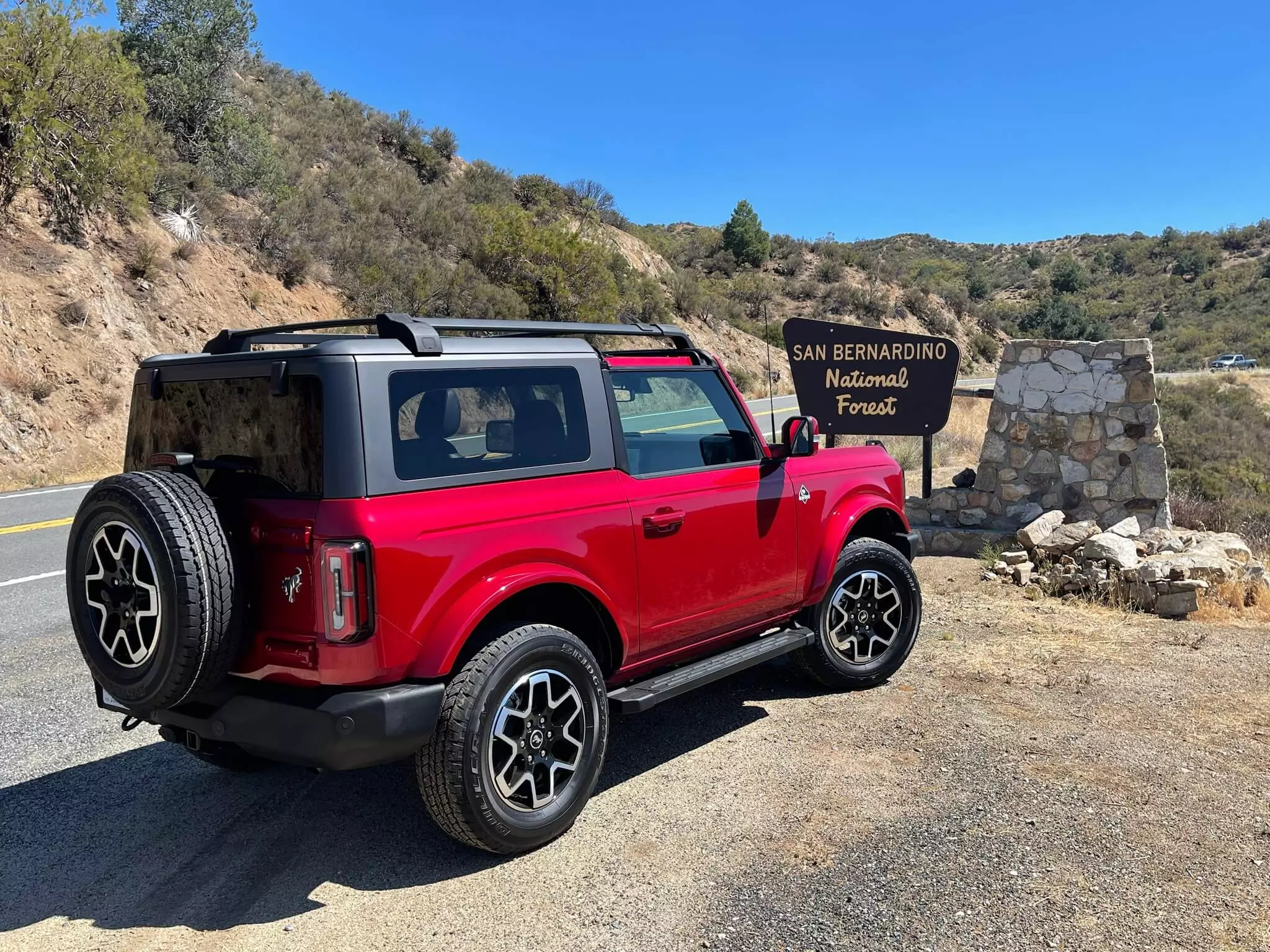
Tradition… but more modern and technical
For this Bronco a new architecture was used that mixes normal solutions in light passenger vehicles (the independent front axle, with aluminum arms, derived from what uses the Ford Ranger) with others that are common in “jeeps” or hardcore pick-ups (such as rigid rear axle or gearboxes).
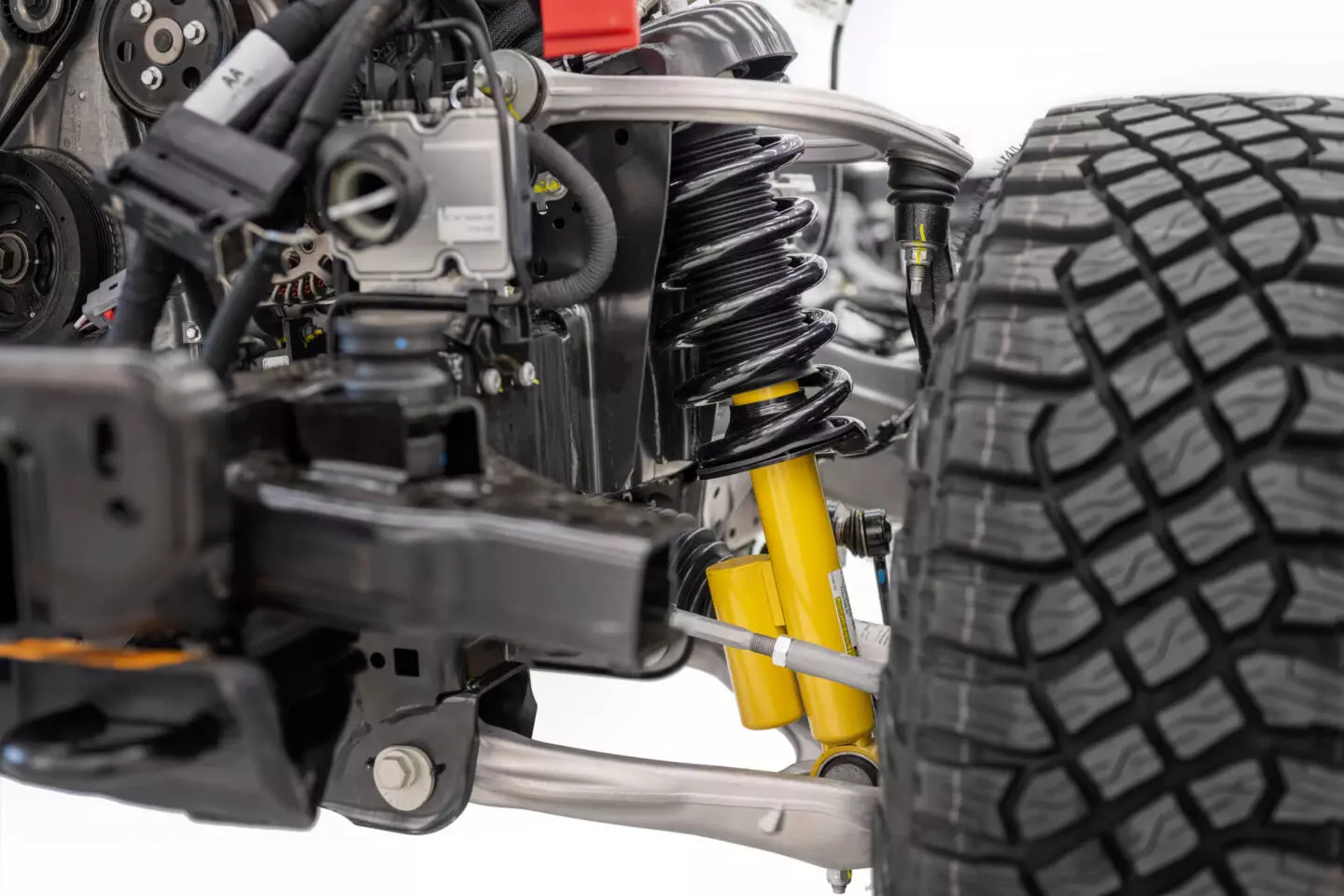
Like the Jeep Wrangler (its original rival, which it now finds) the structure is a chassis with spars with a cab placed on top, unlike the new Land Rover Defender (another “enemy”, but now with a more elitist positioning) , which now has a monocoque.
A rigid axle remains behind, and there are many features that contribute to the GOAT (Go Over Any Terrain… that is, bypass anything) skills that Ford says are part of the Bronco's DNA. The acronym GOAT appears on the rotary selector for driving modes and gearbox activation, placed between the two front seats, next to the gearbox selector.
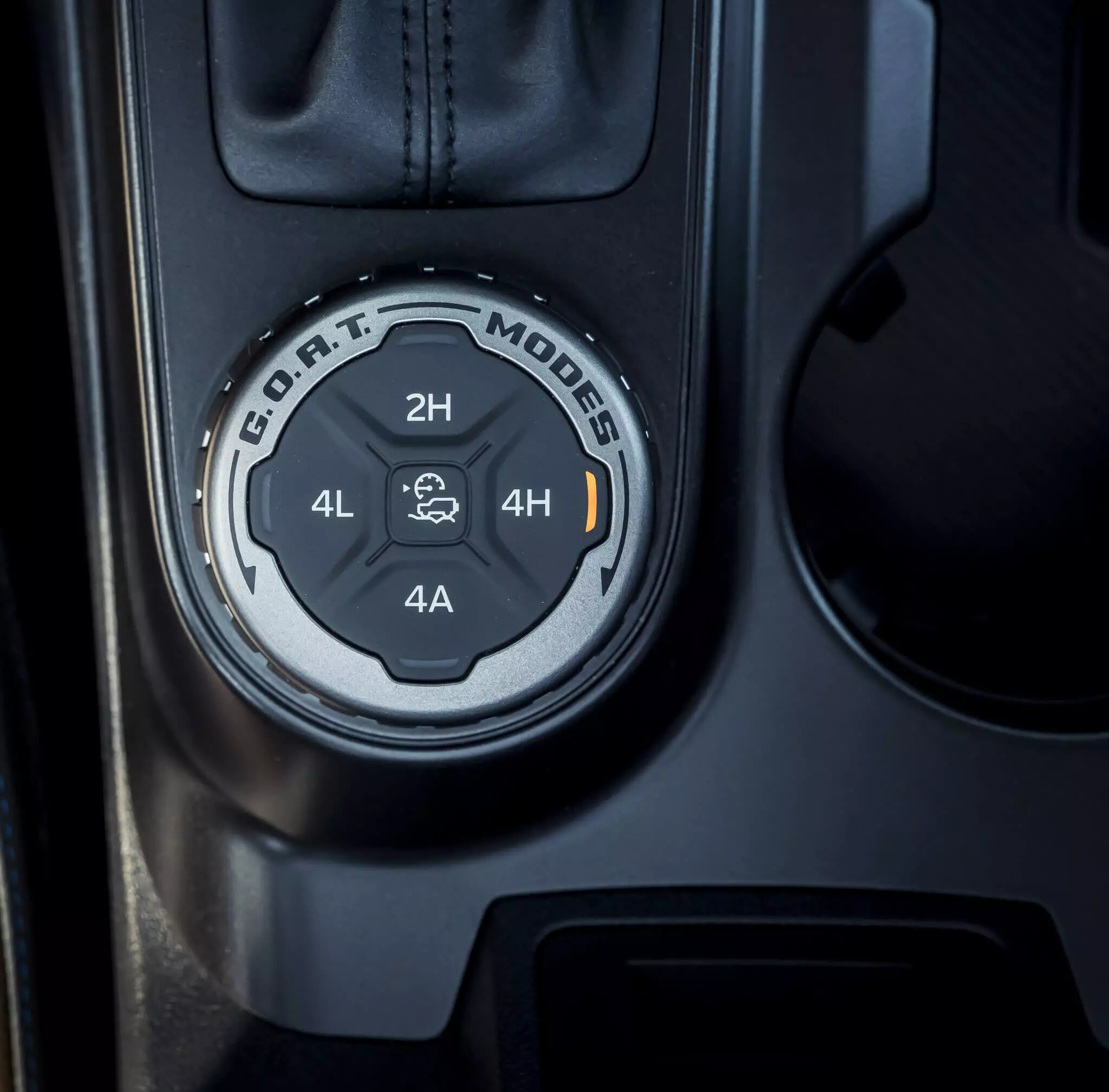
Speaking of the gearbox, it can be seven-speed, in the case of the 2.3 EcoBoost four-cylinder engine with 274 hp and 420 Nm, or a 10-speed automatic, exclusive to the 2.7 l V6 EcoBoost engine, with 335 hp and 563 No.
There are seven driving modes to choose from (Normal, Eco, Sport, Slippery (slippery), Sand (sand), Baja, Mud/Ruts (mud, ruts) and Rock Crawl (rocks), the last three only in the most suitable versions for off-road use.
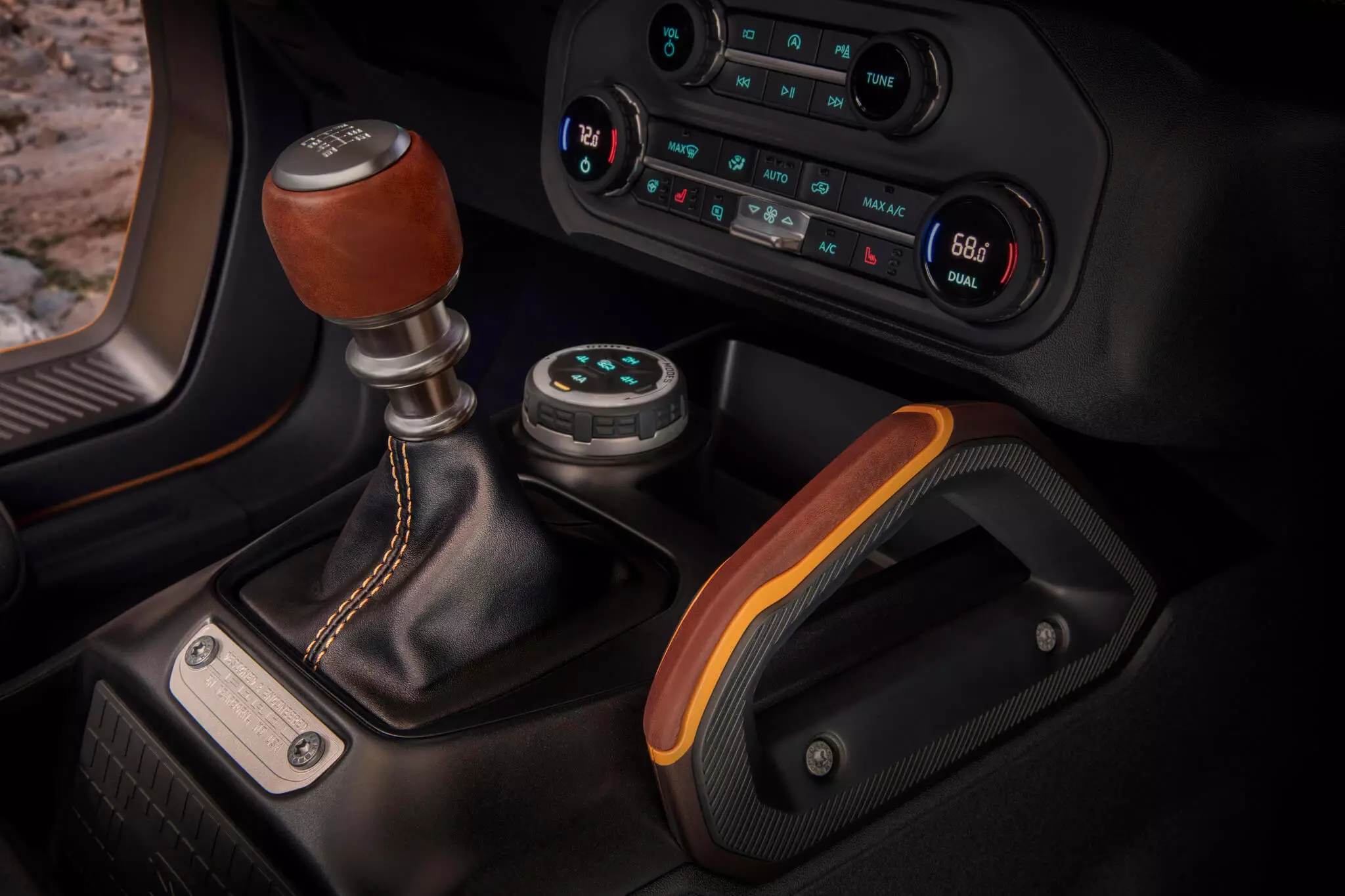
There are also two 4×4 systems available: one with a normal transfer box and the other automatic, which manage the delivery of power on both axes. We can opt for both, optionally differential locking systems, to maximize traction (which, unlike the Jeep Wrangler, can be locked independently of each other).
There is also the optional Trail Toolbox, a kind of “toolbox” for more demanding terrain, which is composed of three systems: Trail Control, Trail Turn and Trail One Pedal Drive.
Trail Control is a kind of cruise control for off-road driving (works in 4×4 on lows). Trail Turn is used to decrease the turning diameter through torque vectoring. It fulfills the function, but it turned out to be a little rough in its action because it basically fixes an inner wheel and the other three rotate around it.
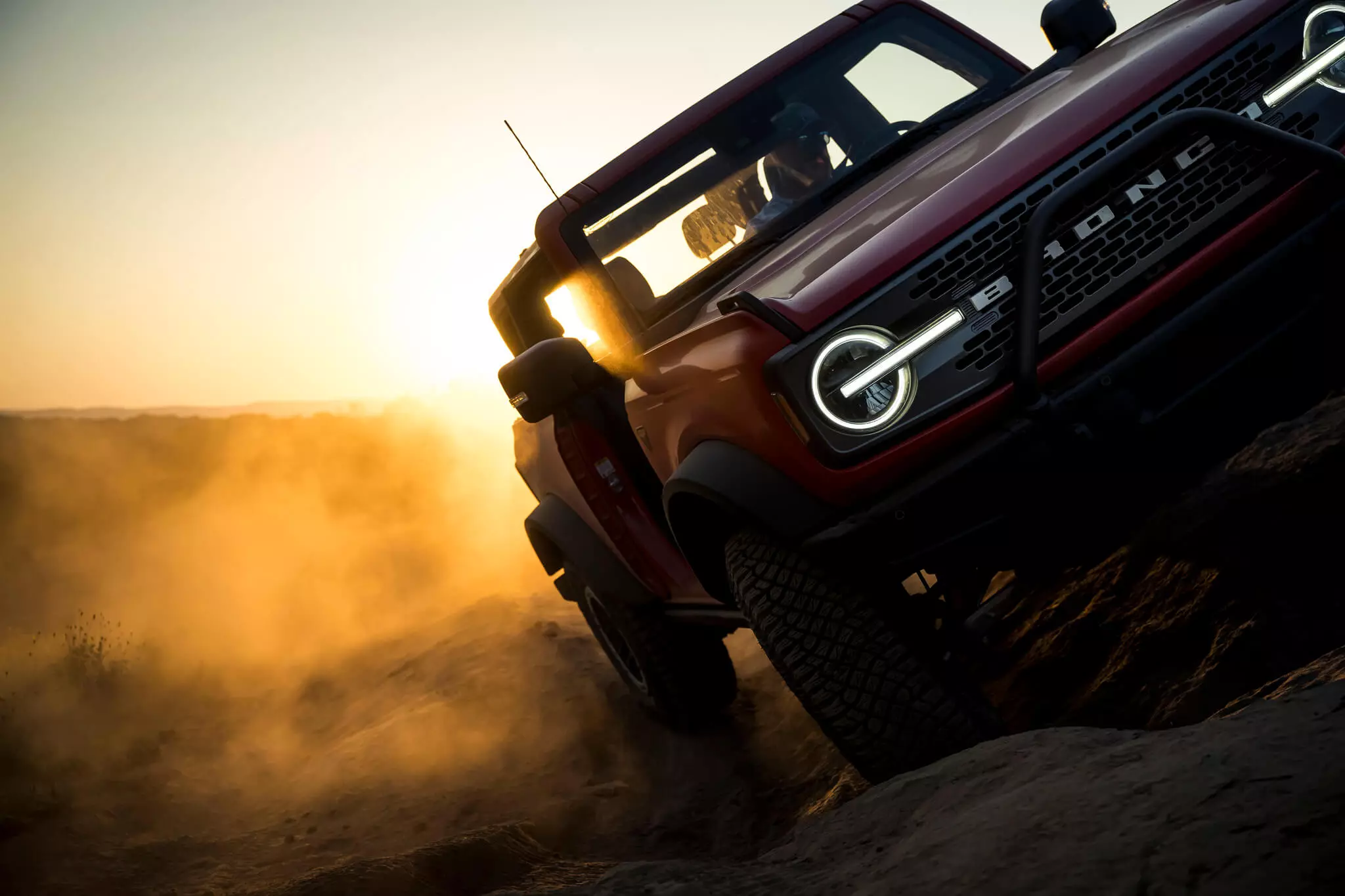
Finally, Trail One Pedal Drive (only in V6) works like in electric cars, where we only use the accelerator (brakes are applied automatically) to manage the speed when passing over rocks and larger ruts.
Find your next car:
Weapons for TT pure and hard
Then there are packages to make the Ford Bronco a real “wild beast”, such as the Sasquatch, which gives this model 35” tires and enables it to pass through waterways of up to 850 mm, has a ground height of 29 cm and with more generous angles of attack, ventral and exit (43.2º, 29.9º and 37.2º instead of 35.5º, 21.1º and 29.8º of the “normal” versions.
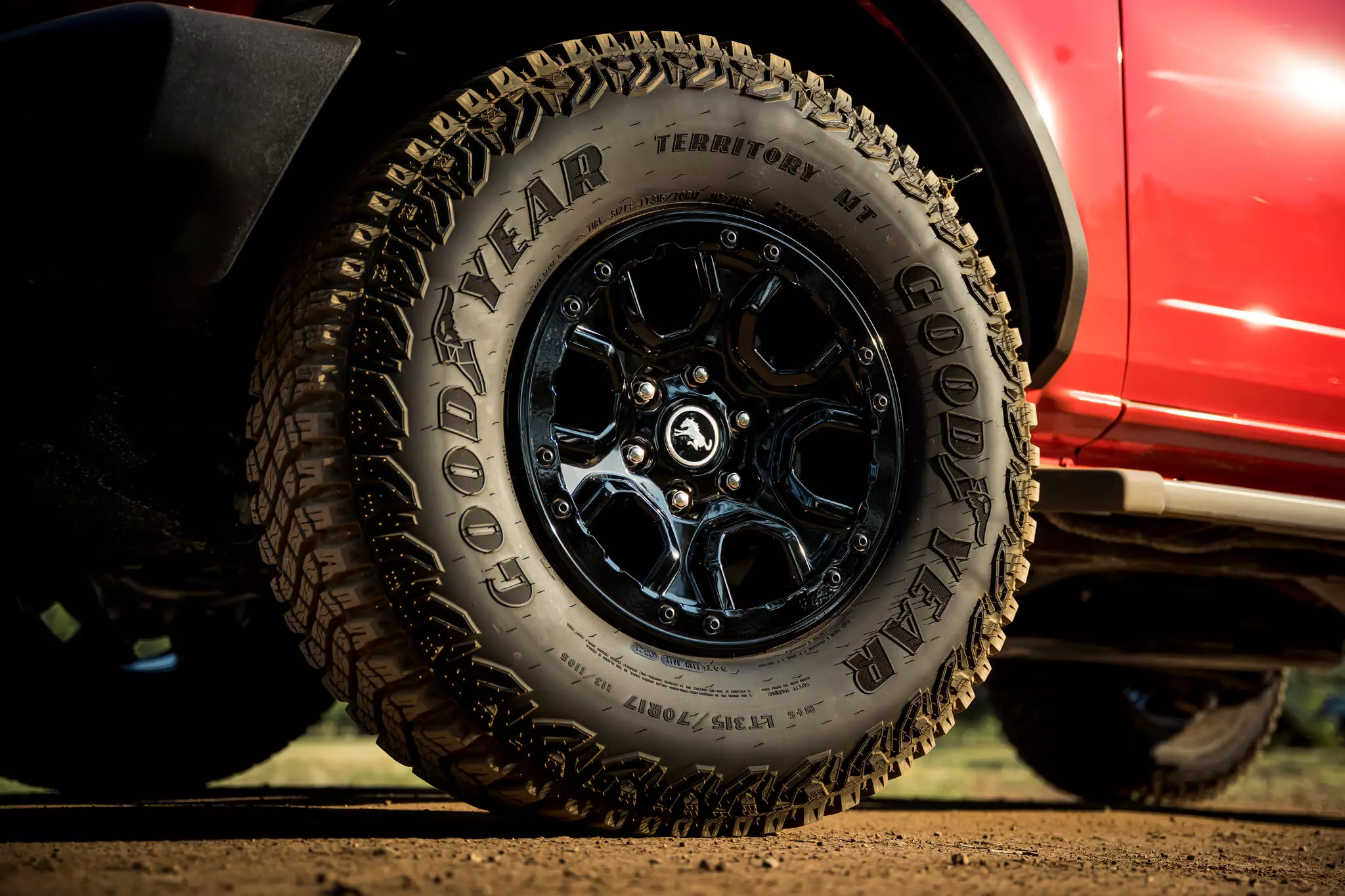
In addition to having beadlock wheels (where the tires are “screwed” to the rims), a shorter final gear ratio, Bilstein signature dampers (with superior valves for increased rigidity and off-road control) and the accompany, metal guards are fitted in the lower areas subject to impacts and more sensitive, such as the engine, transmission, transfer box, fuel tank, etc.).
The Bronco Sasquatch also receives a semi-active stabilizer bar that can be turned off in 4×4 to maximize axis crossings and the angle of attack, and must be “turned on” again for better steering response and more stable behavior on asphalt .
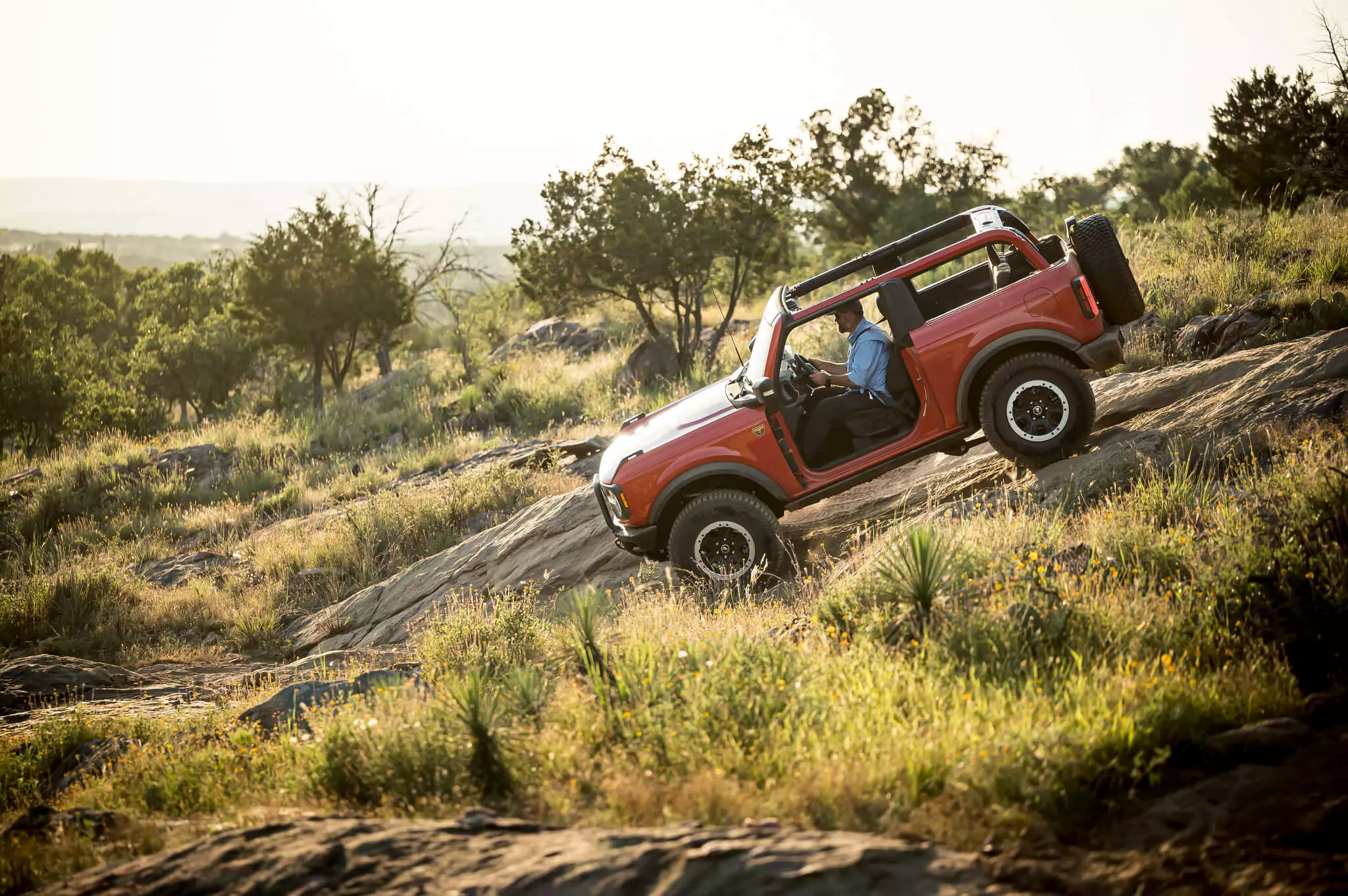
Unlike the identical technology used by the Jeep in the Wrangler Rubicon, here it is possible to deactivate the bar midway through the obstacle, so that the resulting greater range of axis crossing allows it to continue on its journey (no need to retreat to linear terrain, deactivate the bar stabilizer and go back to trying to overcome the obstacle).
the american dream
To be able to guide the Bronco, it is necessary to cross the Atlantic because on this side there is none and will not be there any time soon. Sales through the official Ford channel are not yet ongoing and even in the United States there are months of waiting lines.
Of the three bodyworks in the family, the two-door, there is one with four doors with an extended wheelbase and, later on, there will be a Bronco Sport, more urban, but which does not share the same technical base (no chassis. stringers, resting on a derivation of the C2, the same as the Focus and Kuga).
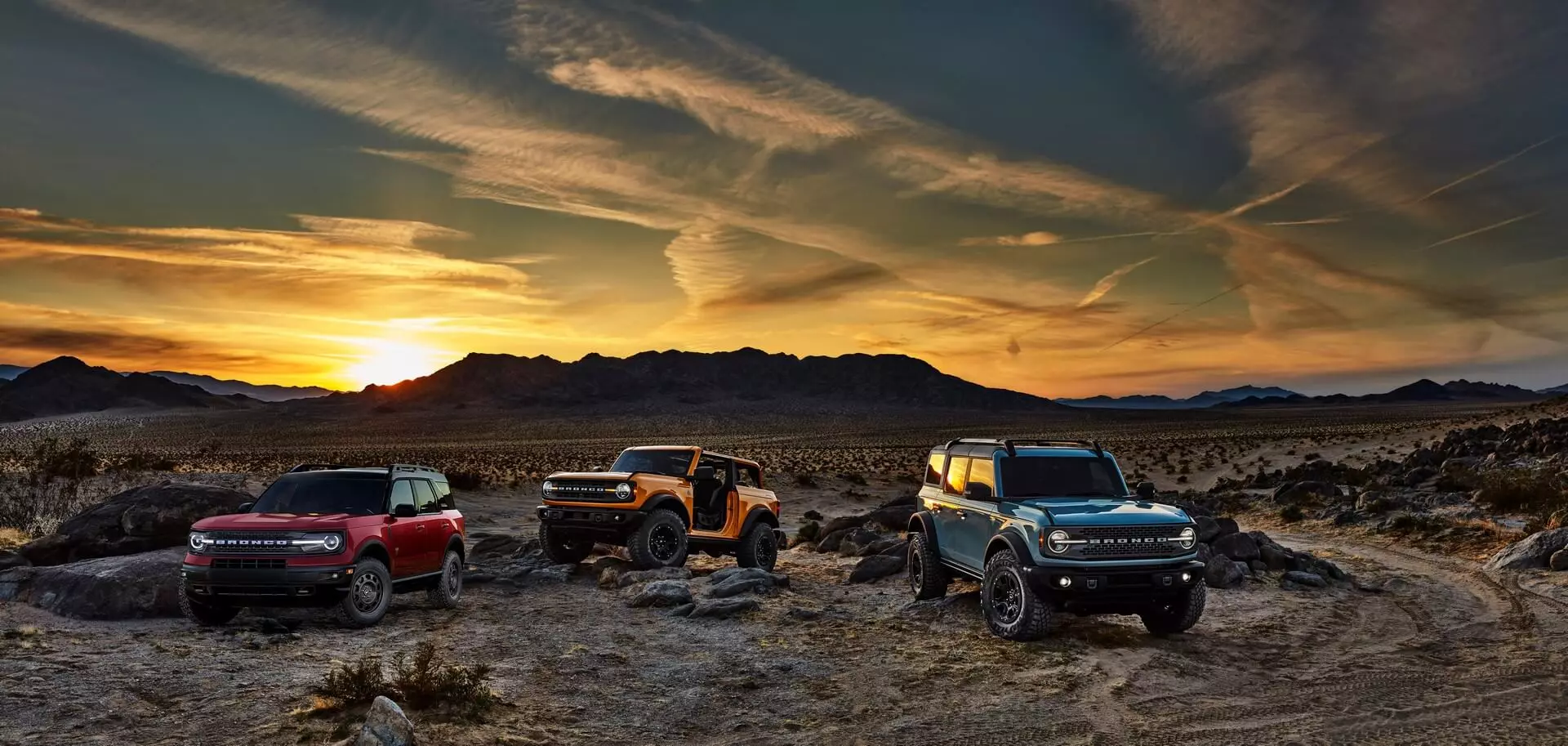
The two-door we drive is probably the one with the most impact among Americans. And what an impact! Two 50s in time to relax fishing near Newport Beach, south of Los Angeles, are in the clouds when they see this red Bronco glimmering in the parking lot and, direct and unfiltered as they are, one of them can't resist commenting: “ it's finally on sale… I wanted to order one, but the seller doesn't even know when that will be possible…”.
The fishing partner quickly pulls out his cell phone to snap some photos to make it easier for him to remember that special encounter, as he mockingly shoots out from under his baseball cap, "If I give you $100,000 right now, can I have it?"
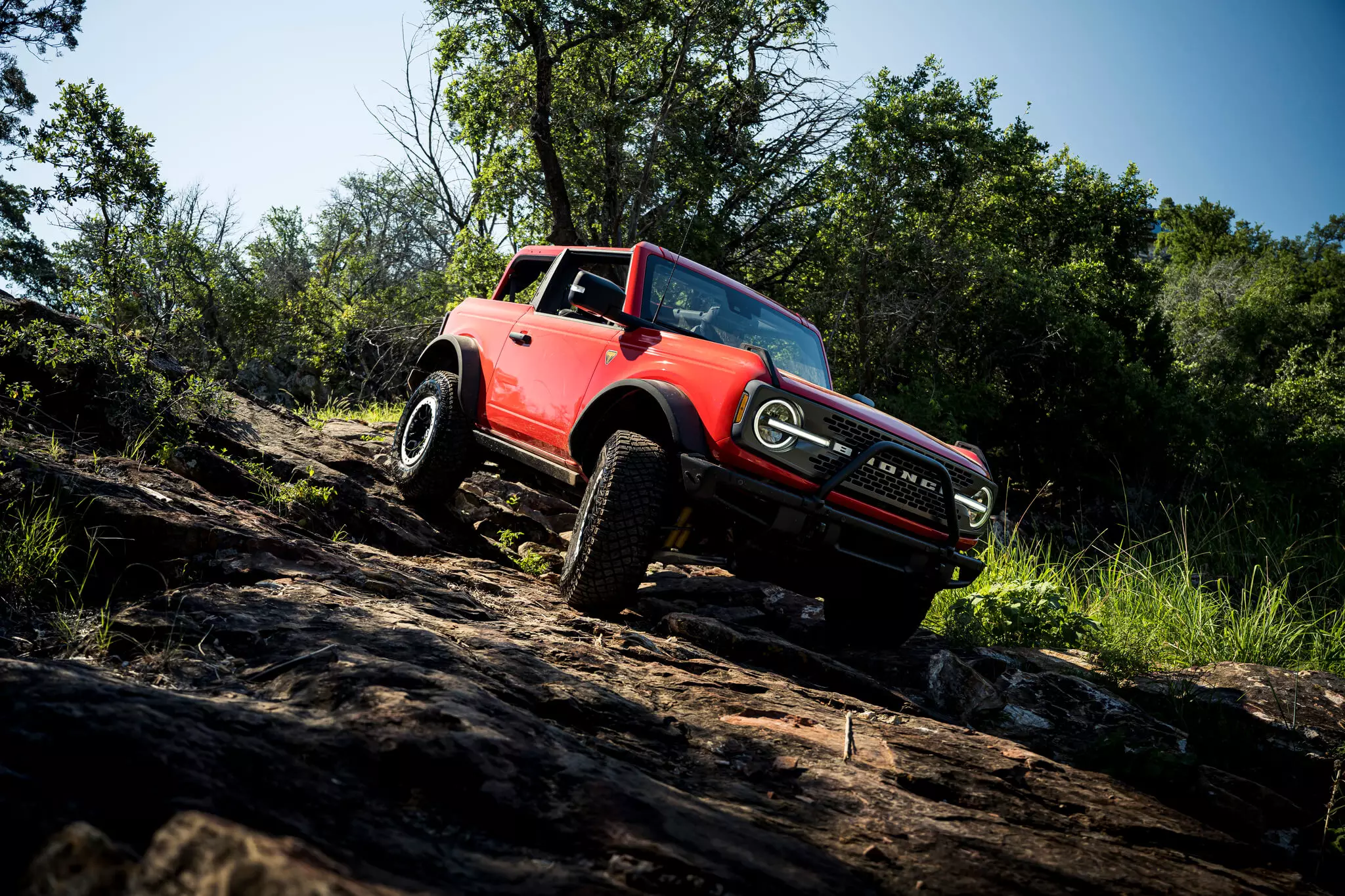
There's a lot of enthusiasm generated by a boxy jeep (it's the retro features that immediately connect it to its ancestor and the successive postponement of its launch only made the wait more painful) and smiles emerge in any town, from San Diego to Palm Springs , confirming the enthusiastic reception the car has received, with more than 125,000 orders already nearly exhausting the production available for the first year of life in this Bronco's resurrection.
Jeep Wrangler as sole rival
Emotions aside, it even makes sense to bet on a pure and tough and relatively affordable 4×4 segment. In the US, it can be purchased from the equivalent of 26 000 euros, and can reach double that value in the top versions, because old rivals such as the Mercedes-Benz G-Class, Toyota Land Cruiser and Land Rover Defender have gained devious refinements (and prices to match), leaving only your public enemy n. 1, the Jeep Wrangler, grandson of the ancient Willys, to fight for the same ground. Today as in the 60s.
In this two-door version, the hardtop can be split and the doors can be removed, with just one person to release the couplings inside (already putting it back requires more labor and some practice, even not to scratch the painting).
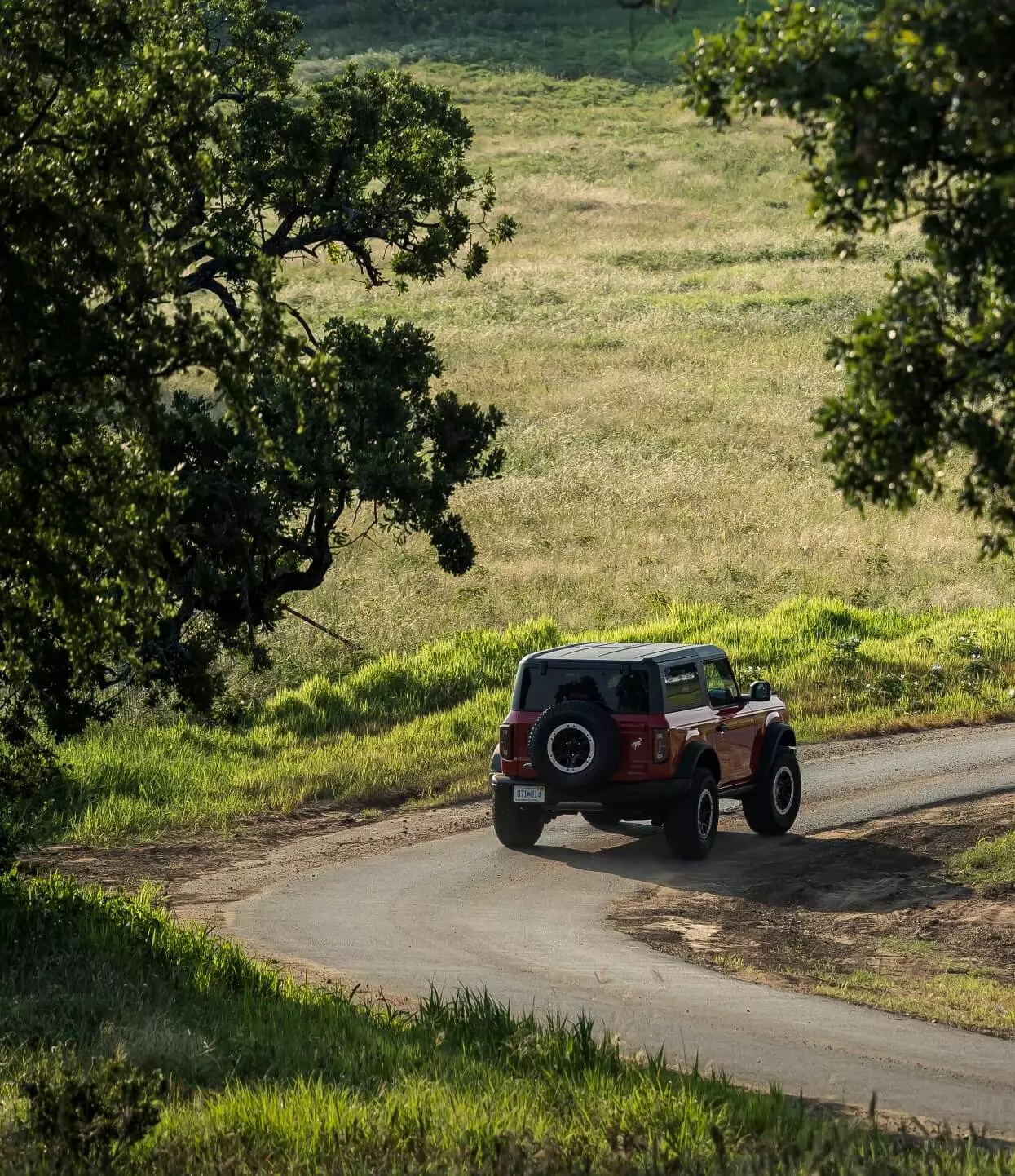
The four-door has a standard canvas hood and a hard top option with four removable sections and the two bodyworks can store the door panels (without frames) in the trunk, inside their own bags, so that they don't get damaged.
In this way, the cabin (for four people in the short body or five in the long one) becomes very airy and well lit, inviting travel in direct contact with the elements, especially since there is no crossbar in the center of the roof.
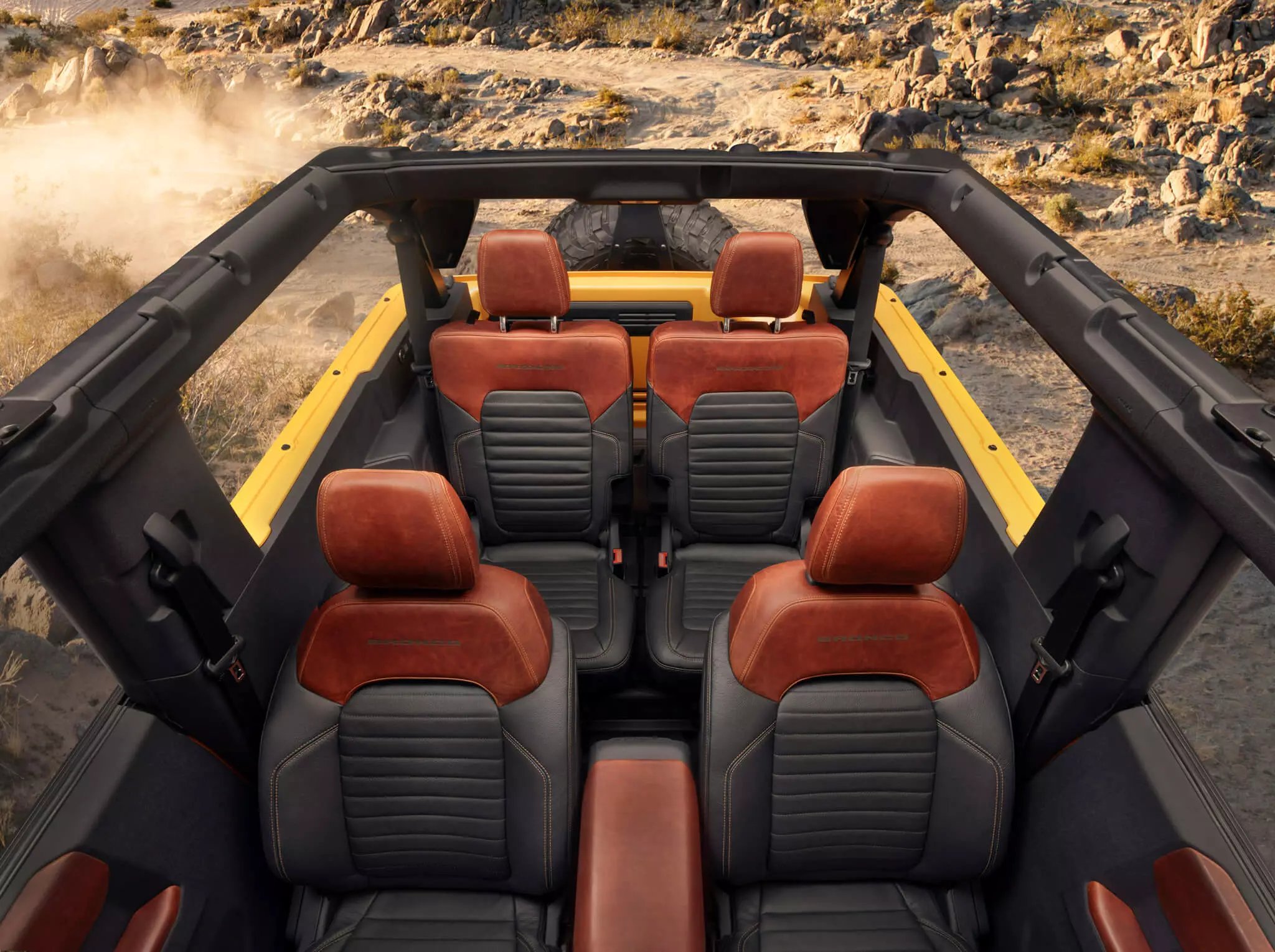
Another positive aspect, the doors are quite large, which makes it easy to get in and out of the two rear seats (which fits two adults well, courtesy of the 2.55 m wheelbase, still 40 cm less than on the Bronco de four ports).
Pure and hard… also inside
The dashboard is very vertical and monolithic, looking like a wall in front of the front occupants, but it also bridges directly into the Bronco's past.
Plastics are totally rigid, which usually makes these structures permeable to the creation of parasitic noises over the years, especially in vehicles that have to engulf all-terrain roads. The positive part is that they are easier to clean, as the car floor can be if you choose the washable floor with holes to drain the water.
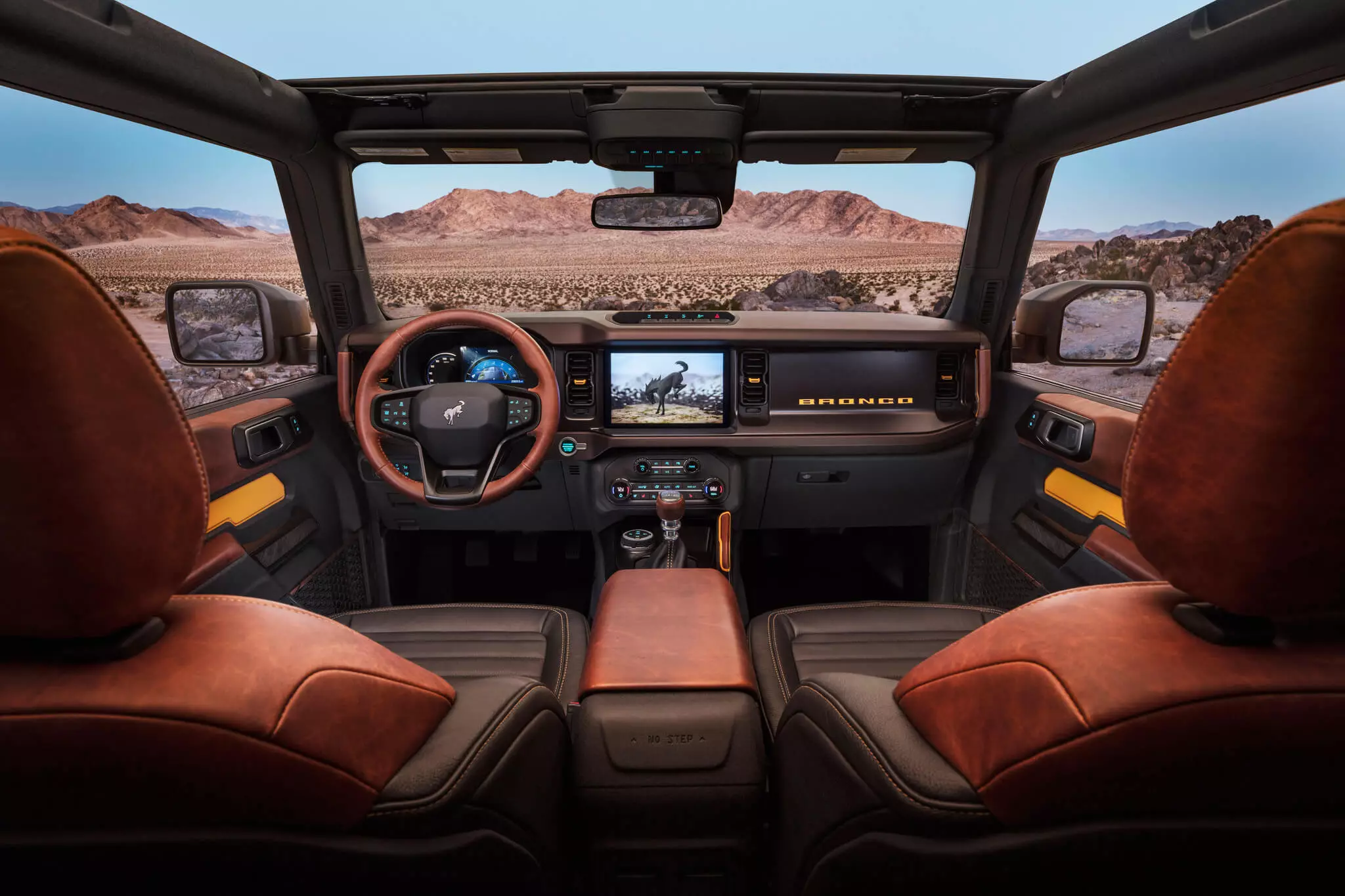
The instrumentation is generally pleasing, with two cons: the digital tachometer does not read well and the selected driving mode has a small and poorly positioned indication.
This choice is made through the GOAT rotary command which, being well rubberized, should have a simpler operating logic: rotate once for each side and go through the each of the seven driving modes in the more “serious” 4×4 versions.
On the side, we find the controls for the power windows and the exterior mirrors, instead of being on the doors as is normal on Ford, simply because it wouldn't do any good when the doors were removed. The seat belt should be height-adjustable.
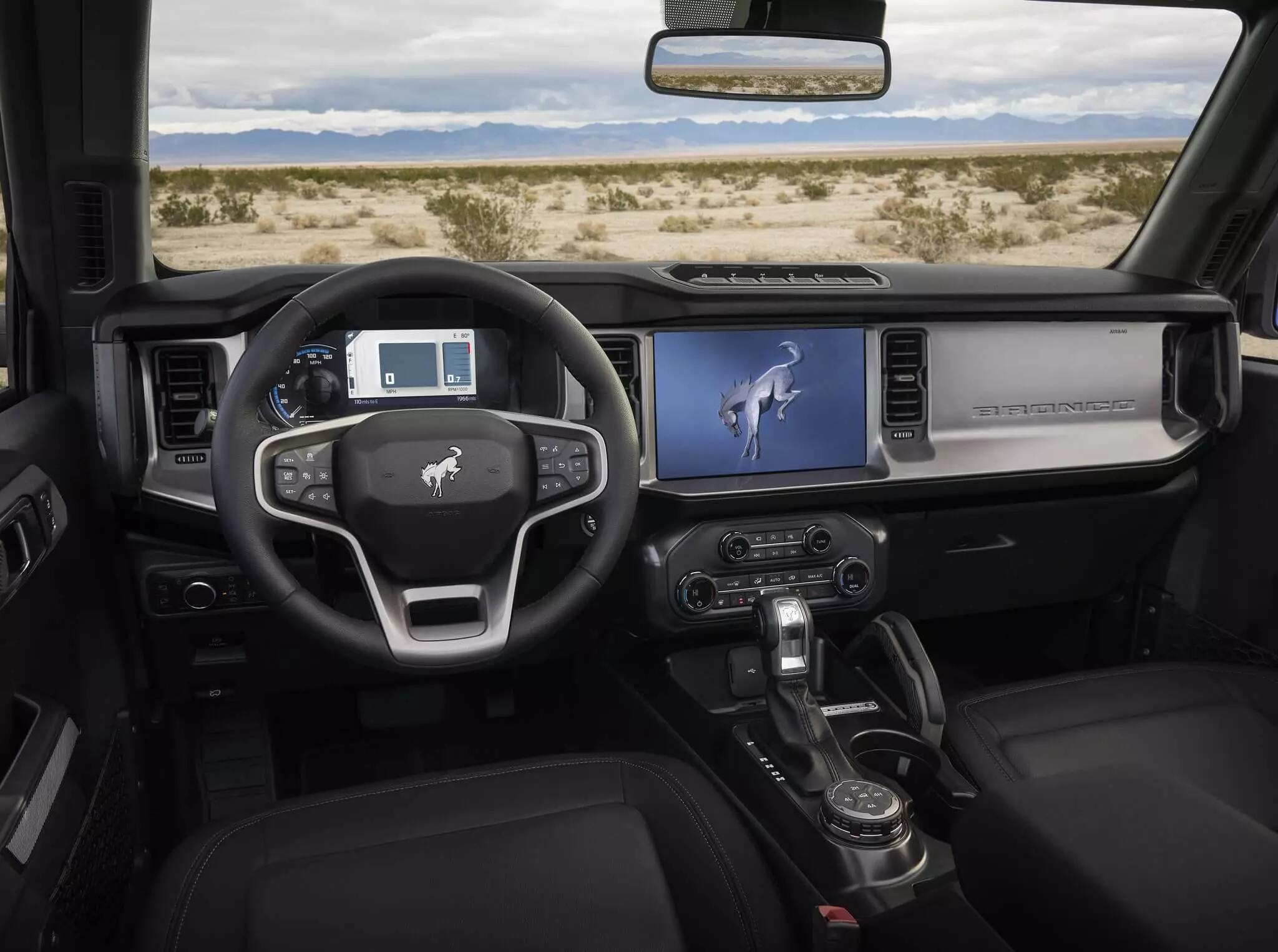
The central infotainment touchscreen has 8" as standard or 12" optionally and has extensive functions (in addition to an extended shelf at the bottom for the user to support their wrist when navigating between menus), and can even display 360º images around the vehicle .
Finally, all controls related to off-road driving (differential locks, anti-roll bar, traction control, Trail assistance…) are located in a horizontal band at the highest part of the dashboard, which is a more convenient placement of the dashboard. than the Jeep Wrangler, where they are on a lower plane.
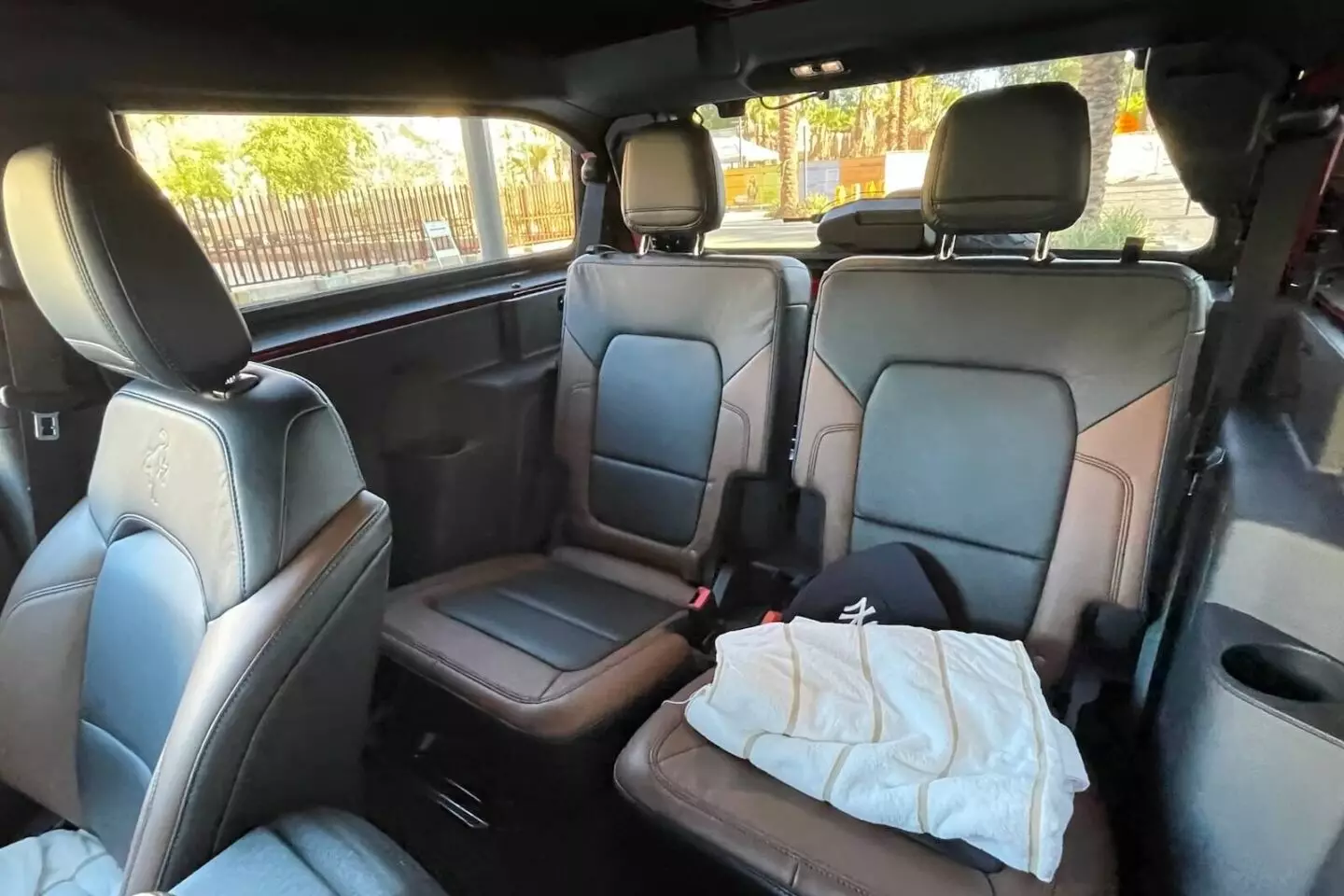
Dynamic competency confirmed
There's nothing better than a mix of city, road and off-road to dynamically realize what the new Ford Bronco is worth. And the end result is very positive, with one or another improveable aspect.
Before leaving the urban area, value must be given to the "markers" at the ends of the bodywork (which can also be used to secure a canoe next to a lake, for example) and also the 360º vision camera, to avoid damaging the bodywork in tighter areas, because the Bronco is quite wide.
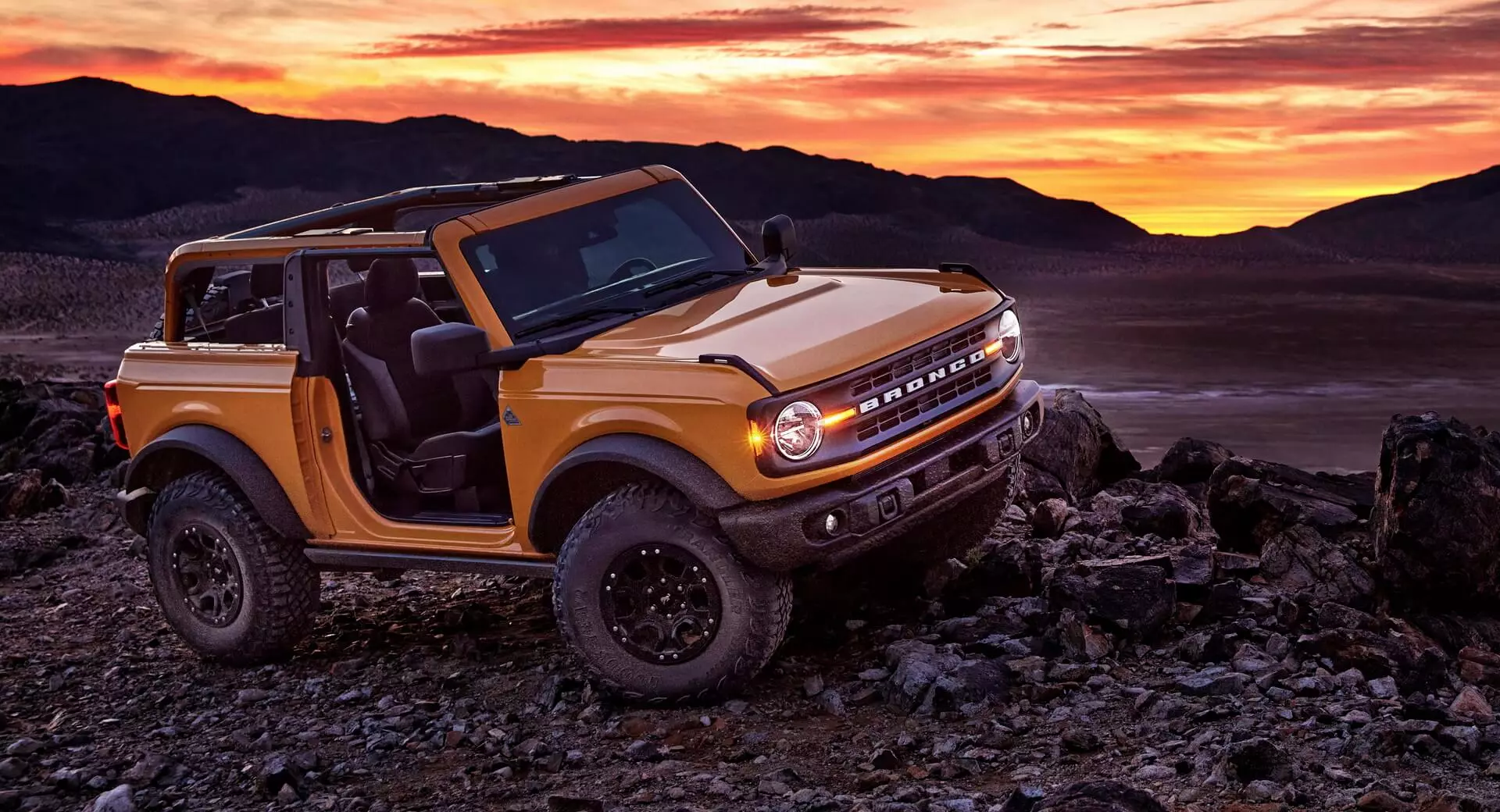
The high driving position, the seats with some lateral support (there are handles so that passengers don't move too much on the TT tracks), the open view to the front and sides — a little less to the rear, unless we're in mode cabriolet — contributes to the feeling behind the wheel.
When driving without doors everything becomes more fun, to the point of accepting the price to pay for the fact that the doors do not have frames: there is more aerodynamic noise when on the highway.
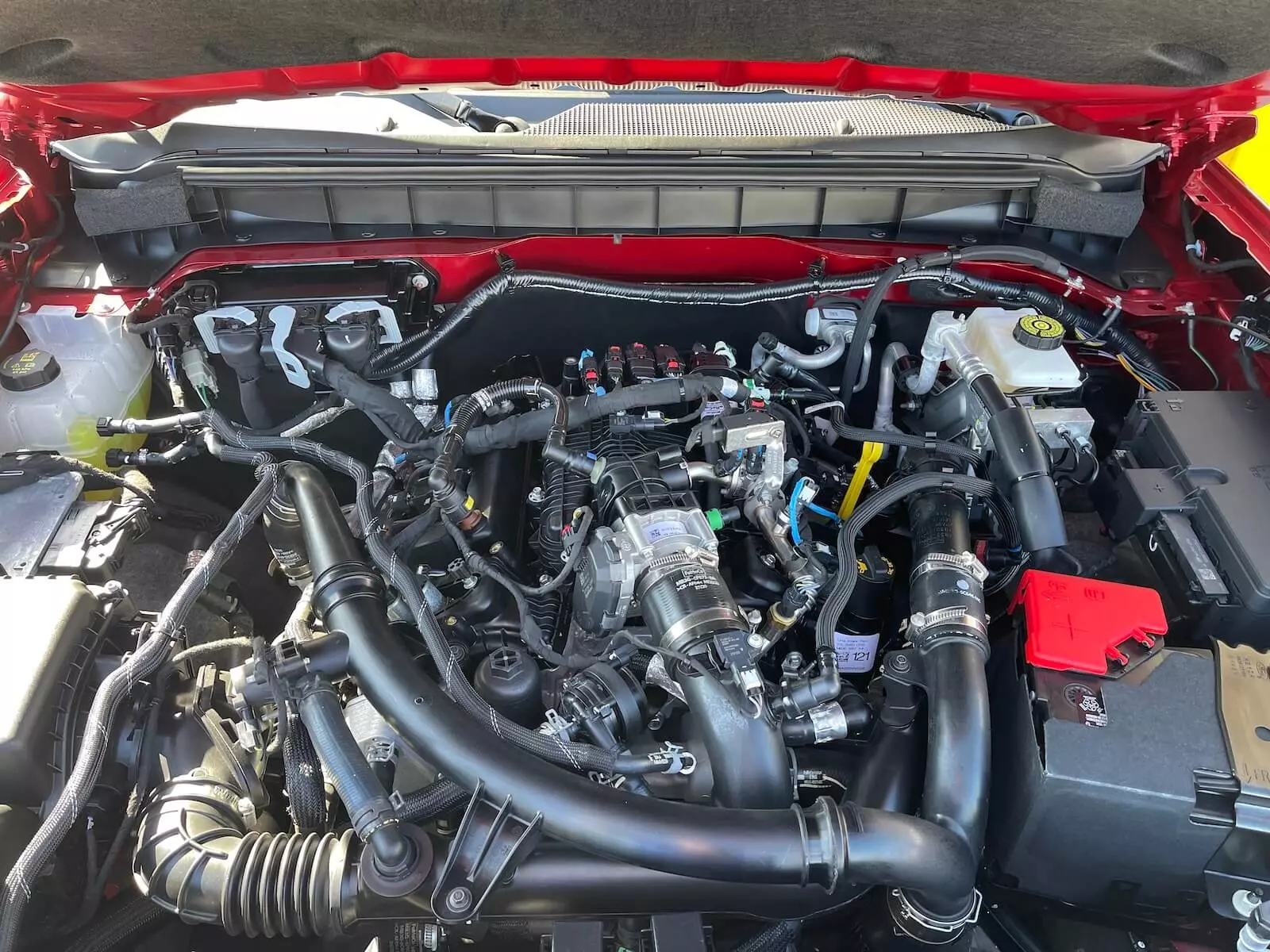
Then, this V6 engine has a pretty impressive “shot” and, for the first time in this 2.7 l unit, Ford managed to generate a tuba (instead of clarinet) acoustics, as befits an engine of this caliber.
A brief experience with the 2.3l four-cylinder showed that with the seven-speed manual gearbox, the 4×4 experience is more complicated, because the throttle response is sometimes hesitant, something that only complicates.
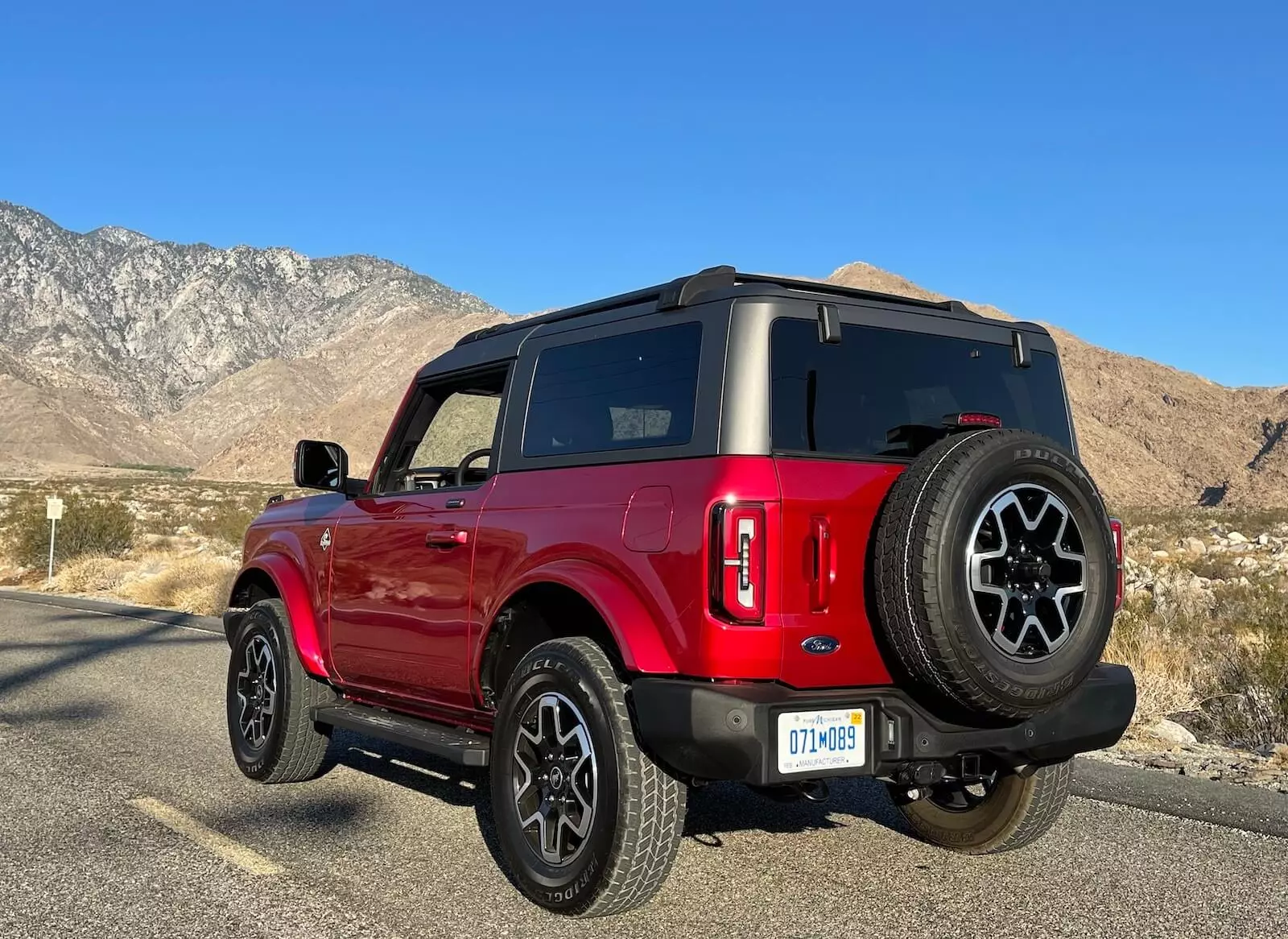
With the 2.7 V6's 10-speed automatic transmission we feel freer to focus on the path, although it's far from perfect in the way it kickdowns (reducing multiple gears in response to full throttle) or how it does the gearshifts at higher speeds.
And the “+” and “-“ buttons on the side of the transmission selector handle weren't convincing (even more so they're slow): it's much more intuitive and fun that manual gearshifts are done with the paddles behind the steering wheel.
As a result of using a more sophisticated front suspension, the directional stability is really good, as is the comfort and precision of the steering response to the instructions passed through the driver's arms.
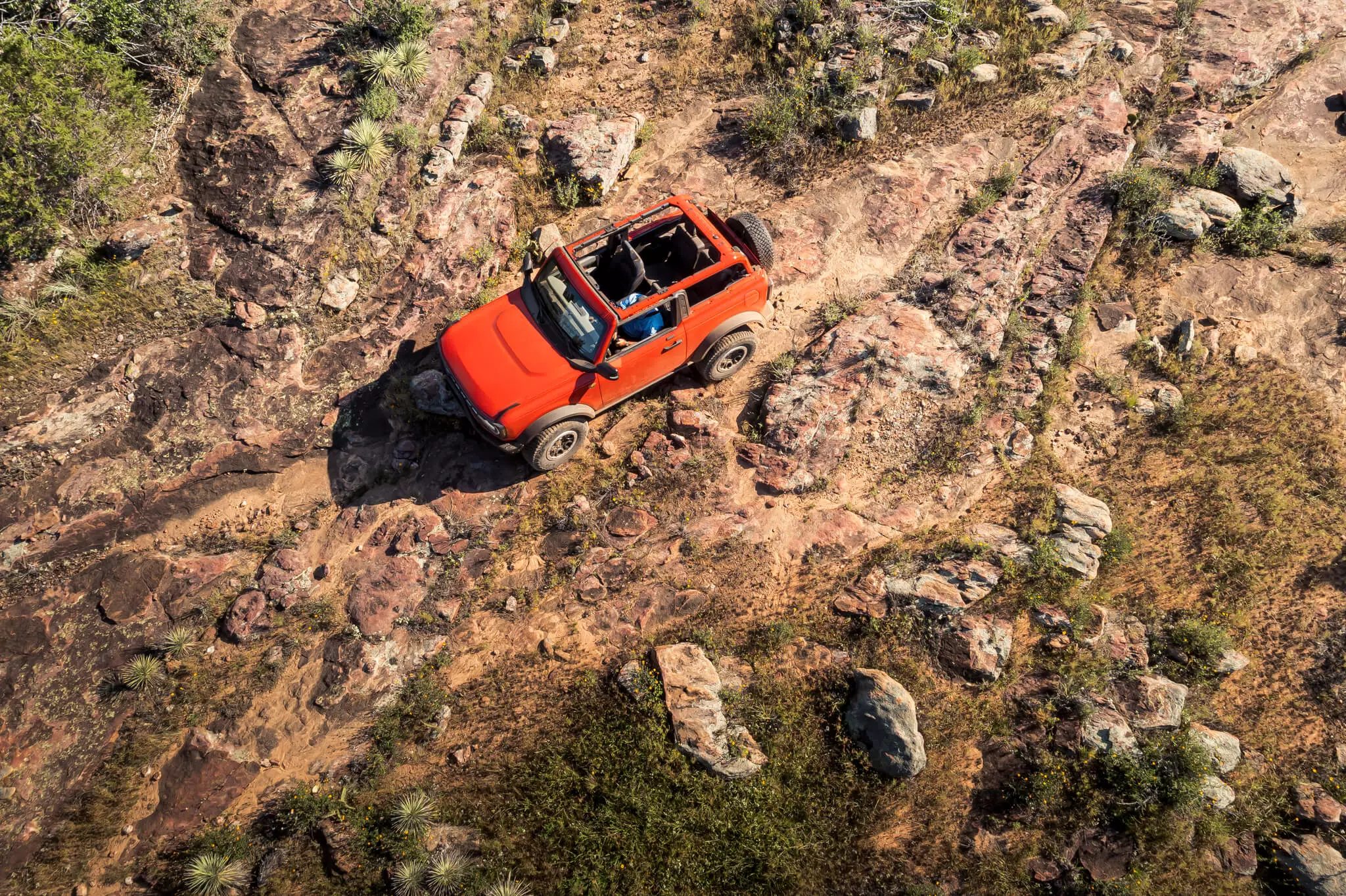
Of course, the Ford Bronco still has more sideways body movement when cornering than a shorter car, but the chassis should be considered quite competent on asphalt, even if it doesn't work miracles. But enough that a mountain road, full of curves, is not just the purgatory to reach paradise that a 4×4 path, without a soul, but a lot of nature, still means for many off-road enthusiasts.
Technical specifications
| Ford Bronco 2.7 V6 EcoBoost | |
|---|---|
| MOTOR | |
| Architecture | 6 cylinders in V |
| Capacity | 2694 cm3 |
| Distribution | 2 ac.c.c.; 4 valves/cil., 24 valves |
| Food | Injury direct, turbocharger, intercooler |
| power | 335 hp |
| Binary | 563 Nm |
| STREAMING | |
| Traction | on 4 wheels |
| Gear box | 10-speed automatic (torque converter); transfer box (reducer) |
| Chassis | |
| Suspension | FR: Freestanding with aluminum “A” arms; TR: Rigid shaft |
| brakes | FR: Ventilated discs; TR: Disks |
| Direction / Number of turns | Electrical assistance/N.D. |
| Dimensions and Capabilities | |
| Comp. x Width x Alt. | 4.412 m x 1.928 m x 1.827 m |
| Between axles | 2,550 m |
| trunk | N.D. |
| Deposit | 64 l |
| Weight | 2037-2325 kg |
| Tires | 285/70 R17 (35″ tires) |
| Off-road capabilities | |
| angles | Attack: 35.5º (43.2º); Departure: 29.8º (37.2º); Ventral: 21.1º (29.9º) Values in parentheses for Sasquatch package |
| ground clearance | 253 mm (294 mm) Values in parentheses for Sasquatch package |
| ford ability | 850 mm (Sasquatch package) |
| Installments, Consumptions, Emissions | |
| Maximum speed | 180 km/h |
| 0-100 km/h | 6.1s |
| mixed consumption | 12.3 l/100 km (EPA) |
| CO2 emissions | 287 g/km (EPA) |
Authors: Joaquim Oliveira/Press-Inform
